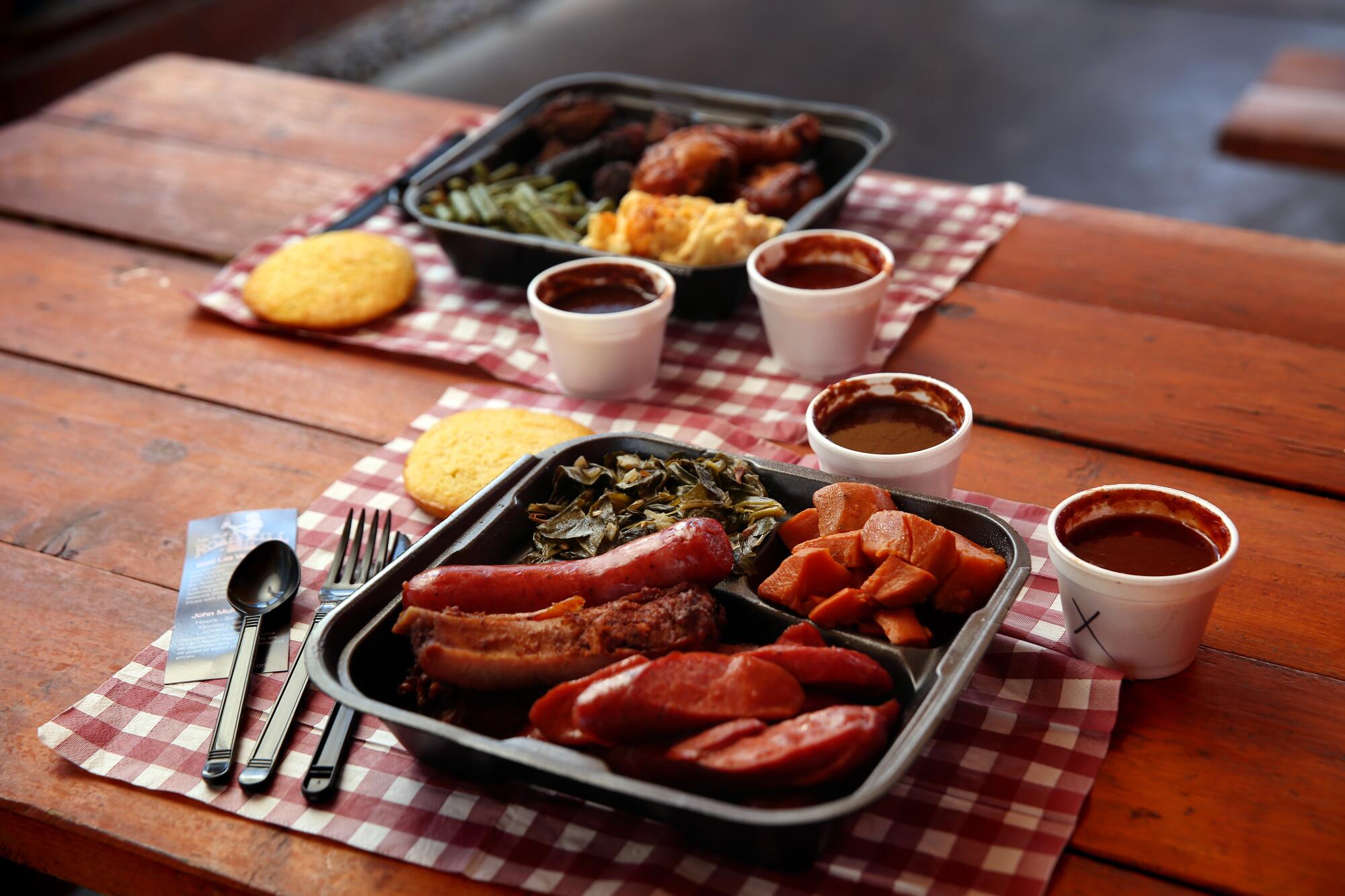
- Share via
LAS VEGAS — Driving up to John Mull’s Meats, a butcher shop and barbecue institution in north-central Las Vegas, feels like arriving on a movie set: Horses loll in dusty paddocks just outside the tall wooden-beam ranch gate that gives way to a gravel parking lot. Single-engine planes putter overhead; the occasional rooster crows in the distance. The land is low, the lots are large, the sky is wider on this side of town.
This is the Las Vegas beyond the realm of glittering banner ads and brochures, and the ranch pulls a crowd, even as the city cautiously reopens. They’re all drawn here by the smoked meat and by Guy Fieri, whose likeness adorns the interior walls like a watchful saint with frosted tips.
On a recent sunny Friday, the lunch line stretched out along the length of the building, most customers ignoring the six-foot markings to ease into available shade. An employee passed out chilled water bottles and took orders.
Inside, Pleshette Payton waited at the butcher counter to order hot links and ribs for her family’s annual Juneteenth barbecue. She’s a regular at John Mull’s meat counter.
“Being from Mississippi, it’s what I’m used to, the butcher,” she said. “The moment you come in the door, they know your name.”
“Our locals know to come earlier in the day to beat the rush because the line goes out the door,” manager Renita Brown said. “It just doesn’t stop, and they wonder why we close at 6 o’clock.”
Despite recent disruptions in their supply chain, John Mull’s is serving a full menu, with brisket and burnt ends, pulled pork and hot links.
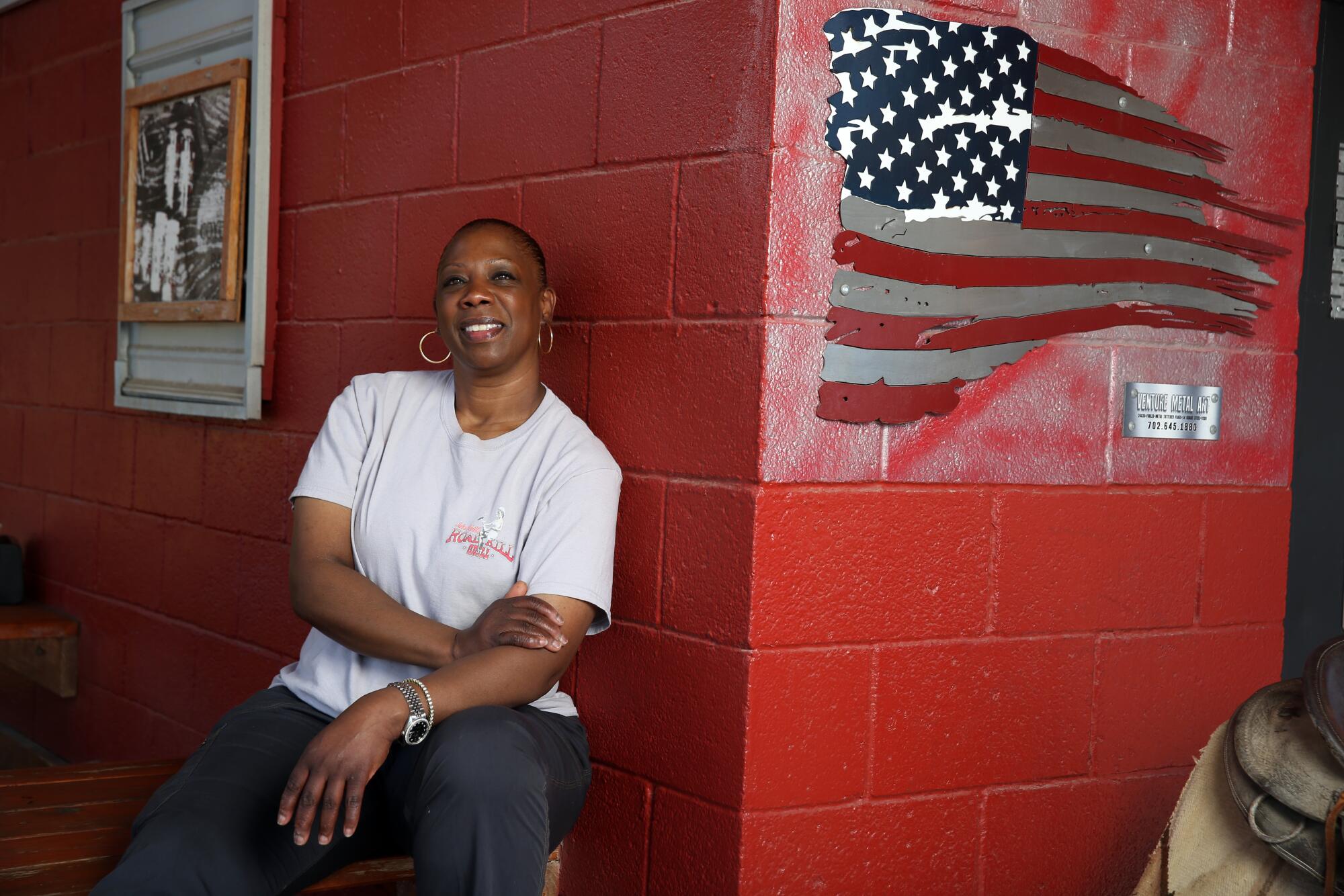
“At one point, I was on the phone 4 ½ hours a day just trying to source meat,” said third-generation owner Chuck Frommer. When wholesale prices got really bad, Frommer said, he operated at a loss. Mull’s lost $250,000 in catering orders at the beginning of the shutdown; he rattled off a list of canceled events: a “topping-off party” to celebrate the completion of the new Raiders stadium; the opening of a new Google building; a construction expo that has been postponed indefinitely.
Like many other small business owners in Las Vegas, John Mull’s bottom line is tied to the vagaries of the tourism and convention industry — over a third of the city’s jobs are in retail, leisure and hospitality. Frommer said the butchery side of his business picked up during the shutdown and kept them afloat — an irony because it was barbecue that saved the former ranch and slaughterhouse.
Over the course of seven decades, John Mull’s Meats has transformed itself in sync with the city’s shifting fortunes. The original John Mull moved to Nevada in 1938 in search of work on the Boulder Dam but ended up in meat processing. By the 1950s, he was running a slaughterhouse and ranch on the same property where the restaurant sits today, and cattlemen from the surrounding ranches would drive in their herds to what was then the edge of town.
Frommer, who took over the business in 1981, was born on the ranch and grew up riding the line, caring for the horses, cows and sheep. He was no stranger to the occasional cattle mishap — but it was one particularly troublesome cow in 1997 that changed everything.
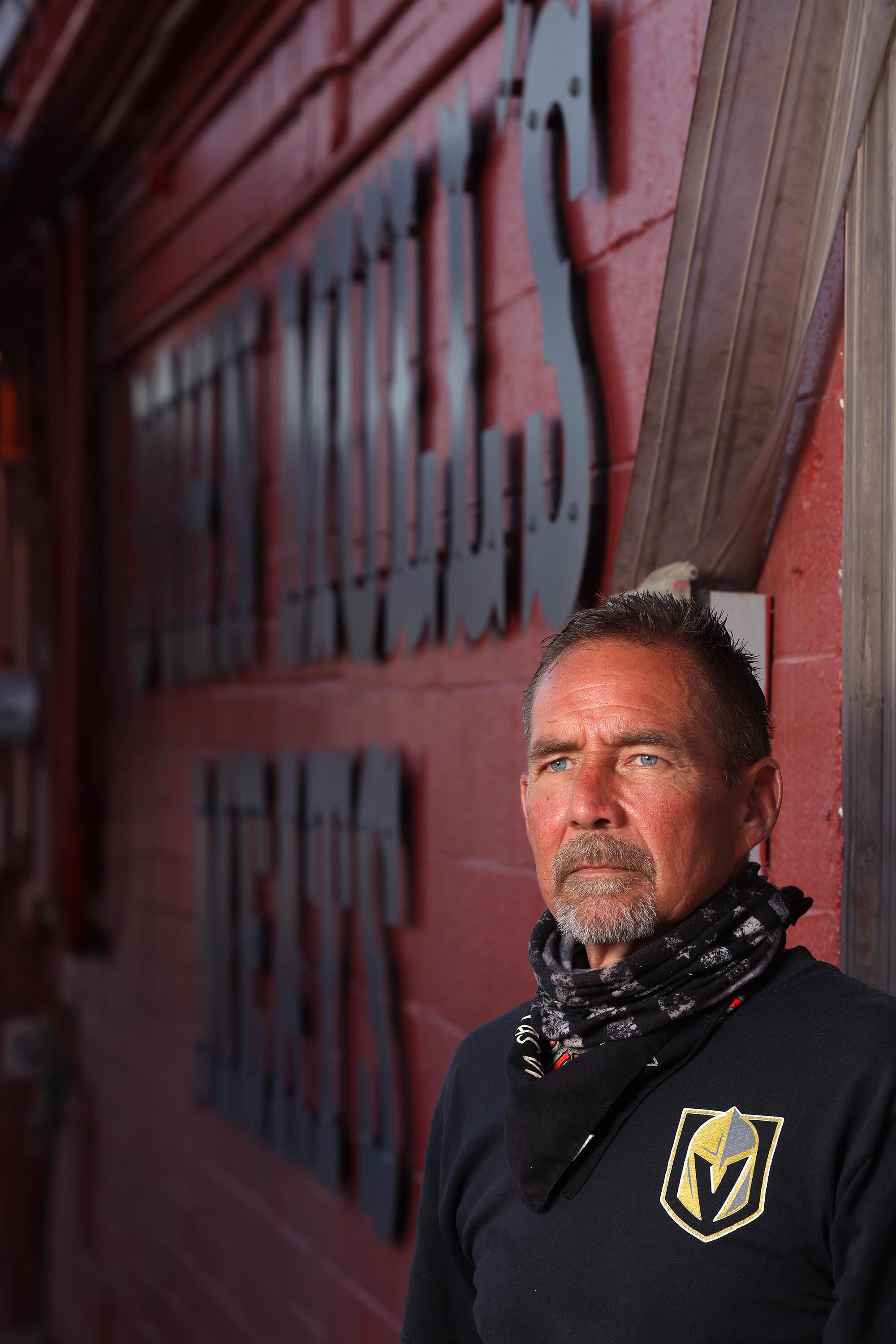
“I’m chasing after him,” Frommer said. “I got a .22 in one hand, got his tail in the other hand, and he’s dragging me down the fence.”
He managed to tie the cow to a dumpster — but then it dragged the dumpster into the street, smashing his new truck and three other cars along the way. A traffic nightmare ensued as the cow dodged vehicles, and it wasn’t long before the police, animal control and a horde of gawking onlookers with camcorders showed up.
“It just reached a point where, man, somebody had to handle it, so I just shot him,” Frommer said of the errant cow. That turned out to be a mistake, earning him six months of probation and the loss of his slaughterhouse’s USDA permit.
In any case, processing cattle in what was now the middle of the city just didn’t make sense anymore: It was harder to bring in the cows, and city folk don’t want to be confronted with the uncomfortable realities of where their meat comes from. The roughly square-mile Rural Neighborhood Preservation zone around John Mull’s Meats is an island — all around it open desert has given way to stucco houses and condos packed tight as hay bales.
Small-scale abattoirs were on their way out too. In 1967 there were nearly 10,000 slaughterhouses across the country. Today there are fewer than 3,000, and production is dominated by the four companies that control 85% of all U.S. beef.
So the lost income from meat processing would have to be made up somehow. Frommer started catering, a business that boomed as Las Vegas grew and grew.
“By the early 2000s, late 1990s, every time you saw a crane above a hotel, once they reached their final floor,” he said, “you could guarantee that we were going to be doing a topping-off party.” Frommer didn’t have plans to start a restaurant — catering was just fine by him.
Enter Guy Fieri. Frommer remembers getting the call from a producer on Fieri’s show “Diners, Drive-Ins and Dives” in 2012, though he didn’t know the show or the outsized effect it has on the restaurants it features. When Fieri’s producers asked him to set up tables with customers for test shots, he shrugged and agreed.
After the show aired, the tables had to stay: Mull’s went from zero to 300 customers a day, and the on-site operation now called the Road Kill Grill was born — a restaurant willed into existence by Fieri.
If not for the barbecue, John Mull’s Meats could’ve gone the way of the other 7,000 shuttered slaughterhouses. Instead, what was once the kill chute has been turned into a storage room for tubs of spices. And just inside the front door, where workers cut carcasses and turned meat into sausage, is a counter of hot food served up to a long line of customers.
Mull’s goes through 3,400 pounds of meat a day, a hundred times the pre-Fieri sales. “It takes a minute — we have grills going from the time that we leave … and then at 5 in the morning we unload and reload,” Brown said.
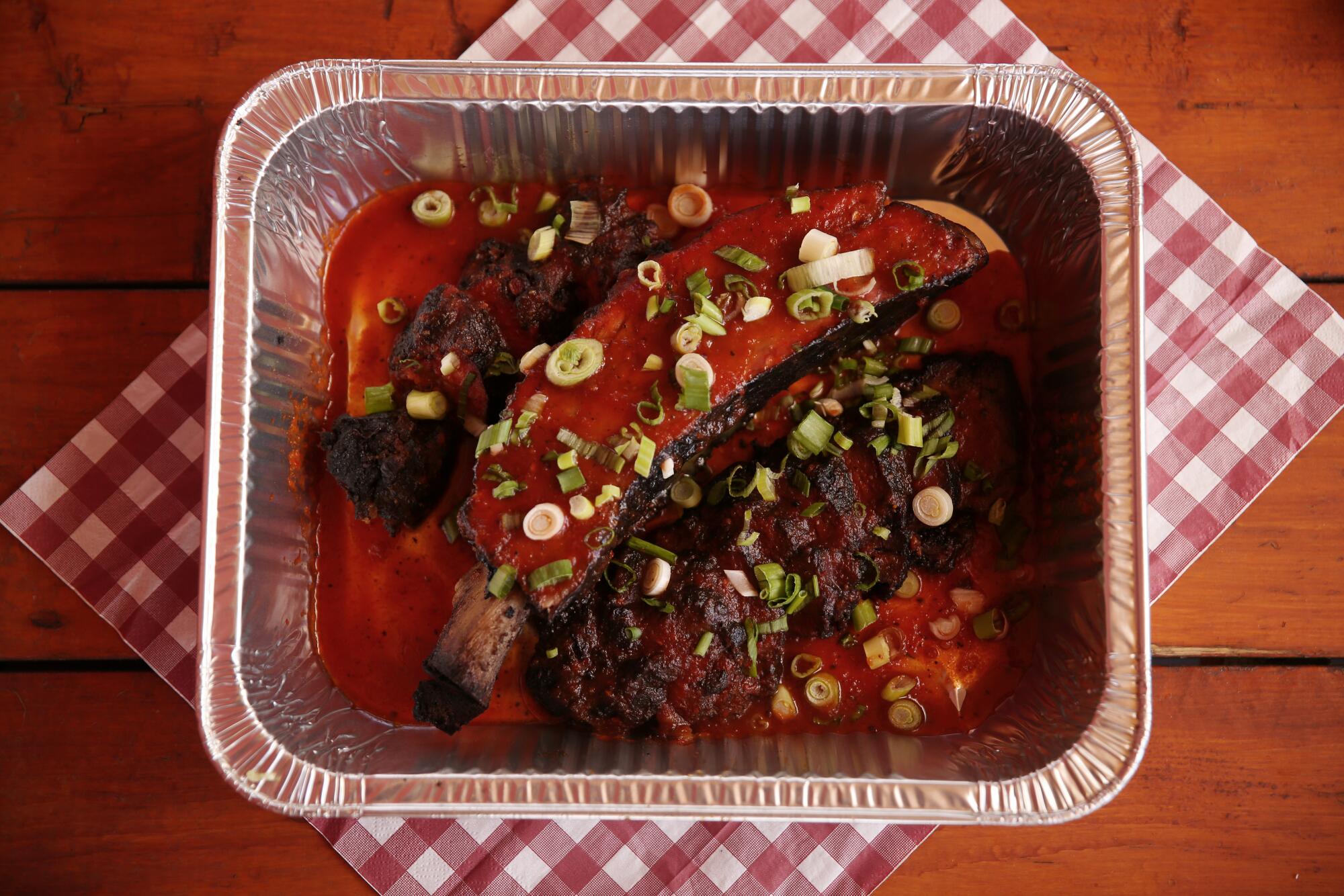
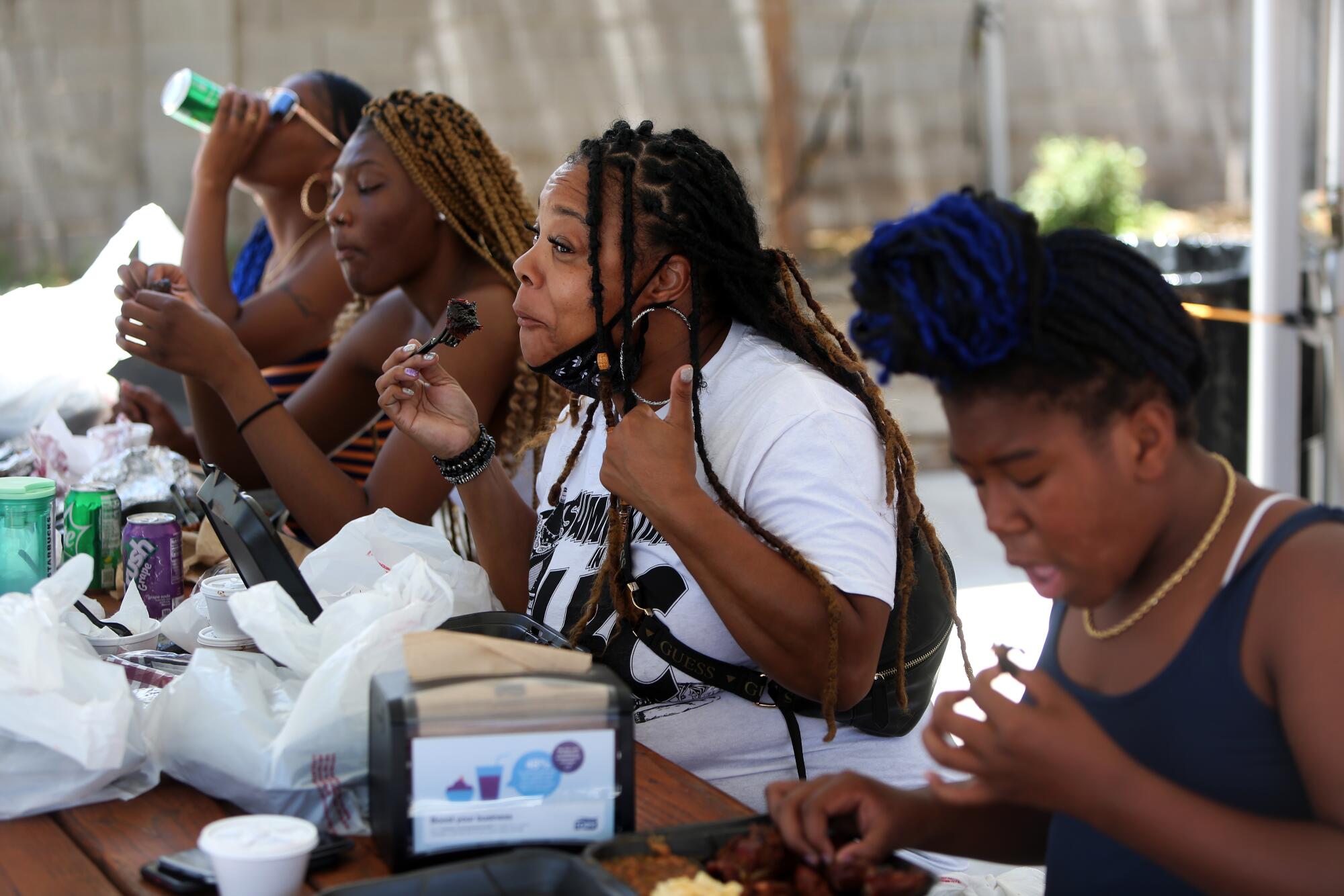

Out back, cellophane-wrapped ribs are going in one smoker while a blend of smoke pellets is fed to another. Frommer is the first to admit that barbecue purists sometimes turn their noses up at the mashup of methods on his menu.
“We learned by trial and error,” he said, shrugging. “But if it’s good, it’s good.”
And it is. The burnt ends pack Texan smoke into blackened edges and tender bites with a touch of Kansas City sweetness. Crisp skin gives way to silky meat in the quarter chicken. The hot links have a good snap (and just enough heat), a testament to John Mull’s sausage-making history.
The end result is a barbecue that is uniquely, perfectly representative of Las Vegas: a confluence of migrations from all regions of the country, marked by reinvention and resourcefulness. And a little bit of luck bestowed by a guy wearing too much jewelry.
More to Read
Eat your way across L.A.
Get our weekly Tasting Notes newsletter for reviews, news and more.
You may occasionally receive promotional content from the Los Angeles Times.










